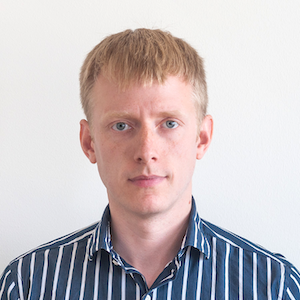The CoWork webinar series is dedicated to the exploitation of the coherence properties of X-rays for advanced materials characterization, with a special focus on inverse microscopy techniques, such as Coherent Diffraction Imaging (CDI), Ptychography and Holography. It is an introduction to Coherent X-ray imaging methods to facilitate the access to advanced microscopy techniques to new users and it welcomes all researchers intrigued by the spectacular coherence properties of X-rays produced at modern synchrotron sources – of which MAX IV is a first example.
When: Friday, 6th of November 2020, 14.00-15.00
Zoom link/registration (Register in advance for this meeting):: https://lu-se.zoom.us/meeting/register/u5IqcuyvqTsjHtM_w6IHB5zO2CiaNDoLe8Q0
After registering, you will receive a confirmation email containing information about joining the meeting.
Speaker: Dr. Dmitry Dzhigaev, Synchrotron Radiation Research, Lund University, Sweden
Title: An Introduction to hard X-ray Coherent Diffractive Imaging in Bragg geometry and quantitative phase retrieval
Bio:
Dr. Dmitry Dzhigaev is a Postdoctoral Researcher at the Department of Synchrotron Radiation Research (Lund University, Sweden). He received his Ph.D. (Dr. rer. nat.) from the University of Hamburg, Germany in 2017. Previously he was a member of the "X-Ray Crystallography and Imaging group" at DESY and a scientist at P10 beamline (coherent X-ray applications) at PETRA III. Currently he develops and apply coherent X-ray imaging methods on the nanoscale crystalline materials and devices. Dmitry possesses 9 years of experience in X-ray microscopy methods and applications at world-leading synchrotron sources and free-electron lasers.
Abstract:
Coherent Diffraction Imaging in Bragg geometry is used to study crystalline samples to access, along with morphology, also information on strain fields, defects and other atomic -scale features.
This webinar will focus on the following points.....
* the basic concepts of the technique and data collection at synchrotron beamlines: assumptions, limitations, critical parameters
* how to perform basic data analysis and obtain quantitative information about your sample
* discussion about the instruments, software, and possibilities within the technique
A test dataset and user-friendly software will be provided to the audience for hands-on experience.
Webinar moderators
Members of the organising group.
Please contact either gerardina.carbone@maxiv.lu.se or asa.grunning@linxs.lu.se for any questions.





















